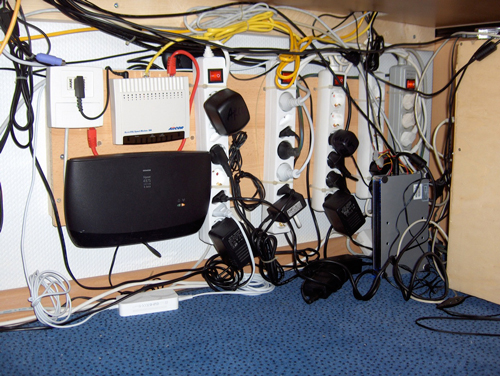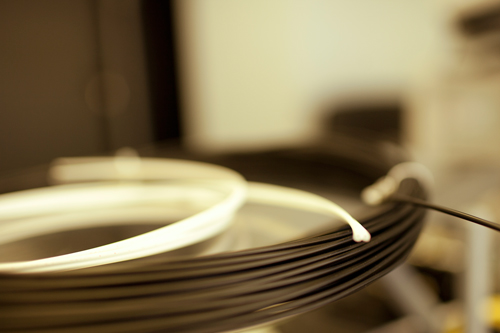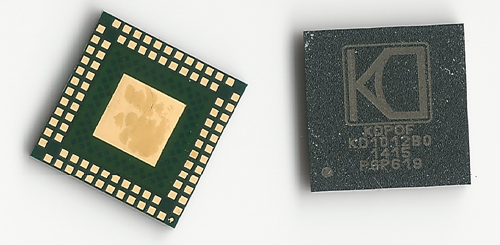Advantages of Gigabit POF in Home Networks

Modern Home Networks
With Fiber to the Home (FTTH) deployments increasing in both Europe and the U.S., ISPs (Internet Service Providers) and telecom operators alike are able to offer higher and higher access speeds to the home. In Europe, consumers are offered speeds from a minimum of 50 Mbps up to 1 Gbps, with speeds of 100 to 300 Mbps being the most common. In the U.S., many consumers are aware of 1 Gbps speeds mainly thanks to Google and other companies that compete for customers by offering higher and higher Internet access speeds.
In the home, consumers are interconnecting more and more devices to one another, and to the Internet. This increase in devices results in an overcrowded network that must be able to handle all of the traffic between the devices and to/from the Internet.
New applications like on-line gaming, coupled with more entrenched applications like video-on-demand are pushing the requirements of the home network toward lower latency (increased response time since data is requested until data is received) and much higher speeds.
Most of the devices in the home, including tablets, smart phones and smart TVs, are connected via WiFi, with a few devices still using wired connectivity, including smart TVs, game consoles and PCs.
The Challenge for Home Networks

Even though ISPs and telecom operators offer higher and higher Internet access speeds, these providers are detached from the methods used to deploy the speed within the home. Rather, the consumer is required to implement his/her own home network that makes available the Internet to all the devices in and around the home.
Unfortunately a vast majority of consumers have limited knowledge about home networking. And in Europe it is even difficult to find professionals or companies that can assist consumers in creating effective home networks tailored to their specific needs. Consumers often unsuccessfully try to turn to electrical installers who don´t know Customer satisfaction levels are dropping while services, such as increased internet speed, are improving.
This lack of assistance for consumers has resulted in lower customer satisfaction levels for ISPs and telecom operators. It’s an interesting paradox where the customer satisfaction levels are dropping while the services, such as increased internet speed, are improving. The level of customer complaints and contract cancellations, although today is still manageable, shows a worrying trend toward unacceptable levels in the near future.
Frustrated consumers are willing and do pay for a higher Internet access speed, but are unable to enjoy the increased speeds anywhere and anytime within their homes. Because they are unable to address this issue on their own, and don’t know who to turn to for help, they often seek support from their ISP or telecom operator only to receive feedback like “Your connection to the internet is working, so it must be a problem inside your network with which we cannot fix nor provide assistance.” Hence, the issue remains unresolved only to add to the consumer/customer’s growing frustration.
While providing higher access speeds, ISP/telecom operators are ignoring the resulting demand for the home network solution required to take full advantage of the services they provide. The lack of a strong home network solution is amplified as higher and higher speeds are marketed to consumers, while more devices are connected around the house and the WiFi spectrum with its limited bandwidth is overcrowded with multiple users and devices sharing the same electromagnetic spectrum.
As consumer expectation is high due to the purchase of several hundred Mbs from their ISP or telecom operator), they are often frustrated by both the perception and experience of a very poor network connection.
In an effort to maximize use of this increased bandwidth, consumers typically purchase extra devices like WiFi repeaters, which in most cases do not resolve the issue. So frustration grows even more as consumers have spent money on “useless” boxes while they continue to experience low quality within their home networks.
Potential Solutions for Home Networks

No New Wires
The most obvious solution for a home network is to employ a solution that does not require any new wires. There are various options that employ this technique; however, all of these solutions have associated drawbacks.
WiFi Networks
A WiFi-based solution seemingly would be the optimum solution for a home network. However, this solution requires all devices to have WiFi connectivity and this is often not the case as WiFi from the home gateway/router does not necessarily provide coverage throughout a home due to structural or size constraints of the home. Potential solutions like WiFi repeaters and extenders may only improve, but not overcome, the inherent challenges.
PLC Networks
PLC (Power Line Communication) is another option for networking in the home. While this type of plug-and-play network is very convenient, the reality is that its performance is marginal and unpredictable. The performance of a PLC network depends a lot on uncontrollable variables: quality and age of the electrical installation, devices using the electrical energy, and noise created in the electrical lines by the devices (just to name a few). As with WiFi extenders, the short-term result may be some slight improvement.
G.hn Networks
G.hn networks like MoCa (Multimedia over Coax Alliance) are technologies that communicate using existing wires, such as coax or telephone cables. This is similar to the way in which PLC networks use the electrical wiring. As with PLC, the speed delivered by a G.hn network is limited and, as a shared media, is subject to the overcrowding that ultimately affects performance.
Installation of New Wires
Installing a new wired network, although may be both expensive and messy, provides the advantage of high speeds (gigabit and higher), and dedicated media that is immune to overcrowding even when several users are using the network.
Copper Networks
As most or all of the networking devices in a home are equipped with copper-enabled RJ45 connectors, a copper network may at first glance seem to be the optimum home network solution. However, this type of network requires the installation of CAT 6 cable throughout a home.
While new homes in Europe are typically built with ducts for telecom cables, most existing homes and buildings only have conduits for mains cable where CAT 6 copper cable cannot be collocated. This means that either new ducts be installed inside the wall, or cable is run outside the wall. Because the first solution can be very costly, and the second solution is unsightly, neither are not often preferred solutions.
Optical Fiber
Optical fiber has an advantage over copper cable in that optical fiber can be collocated in the same ducts as the mains cables because fiber is not electrically conductive. This means that consumers are not required to install expensive new ducts or lay fiber outside the wall. The biggest challenge with this home network solution is that most network devices are not optically enabled, so a media converter is required to connect network devices to the optical network.
Glass Optical Fiber
Glass optical fiber offers a very large bandwidth so this home network solution potentially can last for years to The ideal home network solution is one that combines the advantages of a POF backbone with ease of installation of WiFi access points distributed throughout the home.
Plastic Optical Fiber
Plastic Optical Fiber, or POF, is inexpensive and highly tolerant to bending and installation manipulation making it easy to install as a do-it-yourself network. As it is limited to speeds up to 10 Gbps, POF is not as “future-proof” as glass fiber. While this may be a concern, most industry predications do not see the need for speeds beyond 10 Gbps for at least 10 to 15 years.

The Ideal Home Network Solution
The ideal home network solution is one that combines the advantages of a POF backbone with ease of installation of WiFi access points distributed throughout the home.
This solution uses a home network POF backbone that is supplemented by a WiFi Access Point in each room that minimizes overcrowding by providing just enough power to cover the room itself yet not enough to reach other rooms.
POF easily can be installed in the mains ducts throughout the home, regardless if dedicated telecom ducts are available or not.

Mobile devices that connect to the network via WiFi will continue to use that connection, but will enjoy the 1 Gbps speed of the POF network.
POF is readily available in most markets, as it has be standardized in Europe by ETSI and by IEEE in the rest of the world. KDPOF (www.kdpof.com/applications/home-soho/) offers chipsets to device makers, and the following companies offer POF media converters and network equipment:
CASACOM
www.casacom.ch/index.php/produkte/fiber-in-the-home-fith/netzwerkkompon…
Fränkische
www.datalight-system.com

